Microsoft Band 2: The Best Fitness Watch for People Who Really Like to Sweat
For decades, Microsoft was considered a company distinguished by copycatting and mediocrity. But today, the company is leading, not following. The latest products, like the Surface Pro 4, the Surface Book, and Windows 10, are elegant, coherent, and truly innovative. The company name may be the same, but the people working there seem to be completely different.
The new Microsoft Band 2 ($250) is even more evidence that a new crew is at work in Redmond. It’s a smartwatch with more sensors and fitness-monitoring capabilities than anything else you can buy.

Microsoft throws us a curve
The original Band was stuffed with more sensors than any of its competitors — a GPS antenna (so you don’t have to carry your phone with you to track your runs or bike rides), a continuous heart rate monitor, UV light detectors to warn you about sunburn, a skin temperature sensor, and so on. But it was so boxy and uncomfortable it felt like you were wearing Legos on your wrist.
Not anymore. The Band 2 is curved. This time, it’s so comfortable it’s easy to forget you’re wearing it.
Related: 22 Fitness Bands and the Battle for Your Wrist
(Microsoft says you can wear the Band either on the inside or the outside of your wrist. But if you wear it on the inside, you can take sly peeks at incoming messages without people around you knowing that you’re not really paying attention to them.)
There are now 11 sensors inside; the new addition is a barometer, for measuring elevation (a bonus for hikers and climbers). The Band also tries to track how many sets of stairs you climb each day, although its tallies often seem to bear little resemblance to the actual number of flights you’ve taken.

No-sweat navigation
The touchscreen is beautiful, fluid, and responsive. You’ll learn how to navigate this thing in about five minutes.
It goes like this:
Swipe sideways to slide through your various tiles. Using the phone app, you can choose up to 10 of these tiles, in any order you like. Many are related to your fitness, like Steps, Sleep, Calories, Workouts, Runs, Bike Rides, UV light exposure, Golf, and so on. And many others are smartwatch functions that show data from your phone, like Messages, Notifications, Calls, Calendar, Mail, Alarms, Facebook, Facebook Messenger, Twitter, and Weather.

Tap a tile to view its contents. For example, tap the Messages tile to read any text messages that have piled up.

And yes, you can read it in the sun (at its maximum brightness setting).
What you’ll soon discover is that the Microsoft Band is like the Galápagos Islands of fitness bands: It’s so different from your Fitbit and Up bands, it seems to have been developed in isolation from the rest of the world.
The Band 2 does six things that are rare or missing in other band-style devices.
Thing 1: GPS
Built-in GPS means that you can go for a run or a bike ride without having to carry your phone for tracking purposes. Later, you can open your phone app and see a map of where you went, complete with full statistics.

GPS is available on many fitness watches, but it’s rare on a slim, band-style gadget. My only gripe is that it can take a few minutes to locate the satellites, which is annoying if you’re eager to get running.
Thing 2: Ultraviolet light sensor
The Band’s clasp, long a design challenge for fitness bands, remains ingenious: You can snap it shut with one hand, and then adjust the fit without losing its grip (you can see how it works in the video above).

But hidden in the clasp is, believe it or not, a UV light sensor. It can tell you how likely you are to get sunburned, and it gives you advice on how to avoid it.
That’s not the only unusual sensor in this thing. There’s also a skin temperature sensor, for example — but, weirdly, there’s nowhere for you to see its readings. (Microsoft says that the skin temp information is used collectively with other sensors to boost the accuracy of the general fitness data.)
Thing 3: Guided workouts
In the Microsoft Health app, you look over a menu of free workouts from various fitness companies.
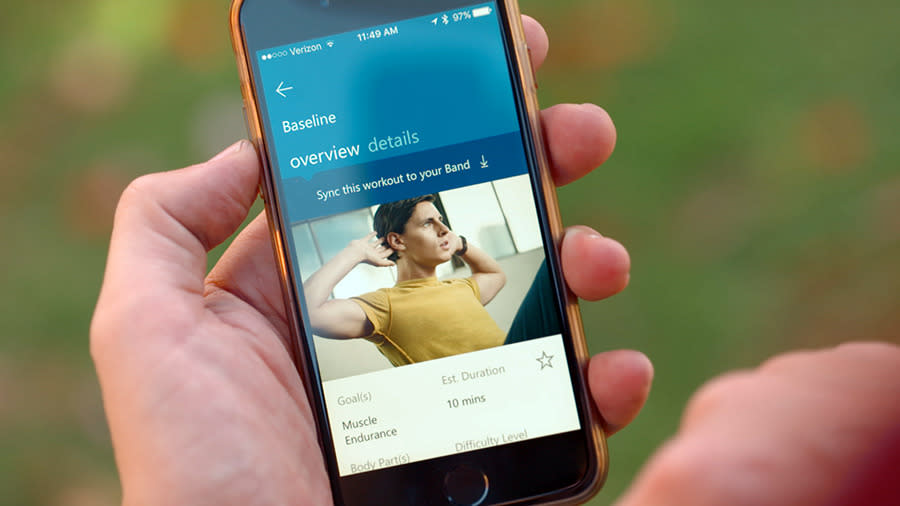
With one tap, you send that workout to your Band.
Then, in the gym or on the track, the watch guides you through the workout. It counts the reps, vibrates when it’s time for the next exercise, and tracks your time and heart rate. In the phone app, you get a tally of calories burned and an estimate of your muscles’ recovery time.
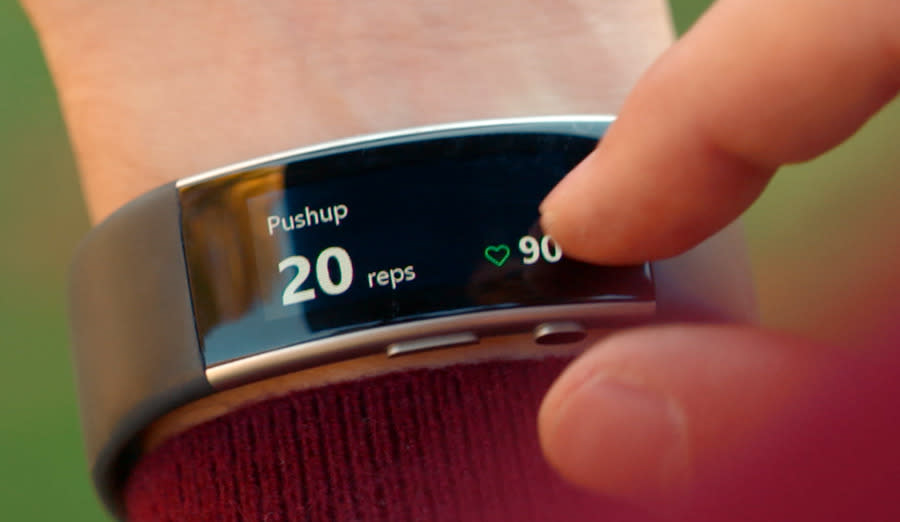
This guided-workout feature truly works. Knowing that there’s some entity in charge, even if it’s a blob of software, somehow makes it easier to stick to a plan and get the workout done.
Thing 4: Universal compatibility
The Microsoft Band is also a smartwatch. Its crisp screen shows whatever text messages, email, phone calls (name and number), Facebook and Twitter posts, and other notifications are arriving on your phone. A subtle vibration on your wrist lets you know, and you have total control over which kinds of things make your wrist buzz.

But here’s the shocker: Unlike any other touchscreen smartwatch, the Band works with any brand of phone: iPhone, Android, or Windows Phone.
Microsoft? Creating products that work seamlessly with its rivals? Something weird is going on.
The features are generally identical. But if you have an Android or Windows Phone, you can respond to text messages with canned responses. In the unlikely event that you own a Windows Phone, you can use Cortana to dictate notes and reminders to your phone with your voice.
Thing 5: Companion apps
Your fitness data isn’t locked into the Microsoft app. You can share its data with popular apps from other companies, like Strava, MapMyFitness, Runkeeper, MyFitnessPal, and so on.
There’s no food-logging feature in the Band app, as there is with Fitbit and Up — but you can link the Band with the fantastic, free Lose It! food-tracking app.
There’s no avalanche of apps for the Band, as there is for the Apple Watch. But there are some. For example, Torch for Band blasts the screen full white so you can use it as a flashlight. Camera Band Control turns the Band into a remote-control shutter release for your phone’s camera.
There’s even a Starbucks tile so that you can pay for your coffee by waving your wrist, and an Uber tile that lets you summon a car ride with a tap.
Thing 6: Golf game
Thanks to a partnership with TaylorMade, the watch can help you find a nearby golf course — and then track your progress through the course, keeping tabs on your swings, distance, pace, and so on.
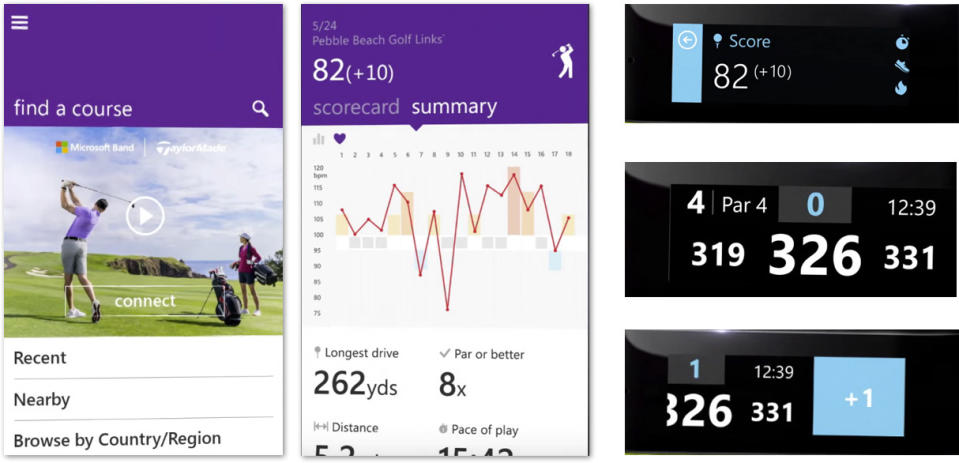
How to see your progress
The Microsoft Band 2 tracks some stats — your steps, sleep, heart rate, calories burned, and sets of stairs taken — continuously and automatically.
You can see the tallies right on the watch. Or you can open the phone app to see more detail.
You can also visit a personal Web dashboard to see an amazing wealth of graphing and analysis, including your past stats. You could easily become so immersed in this torrent of insight into your own body that you become a stats potato and get no exercise at all.
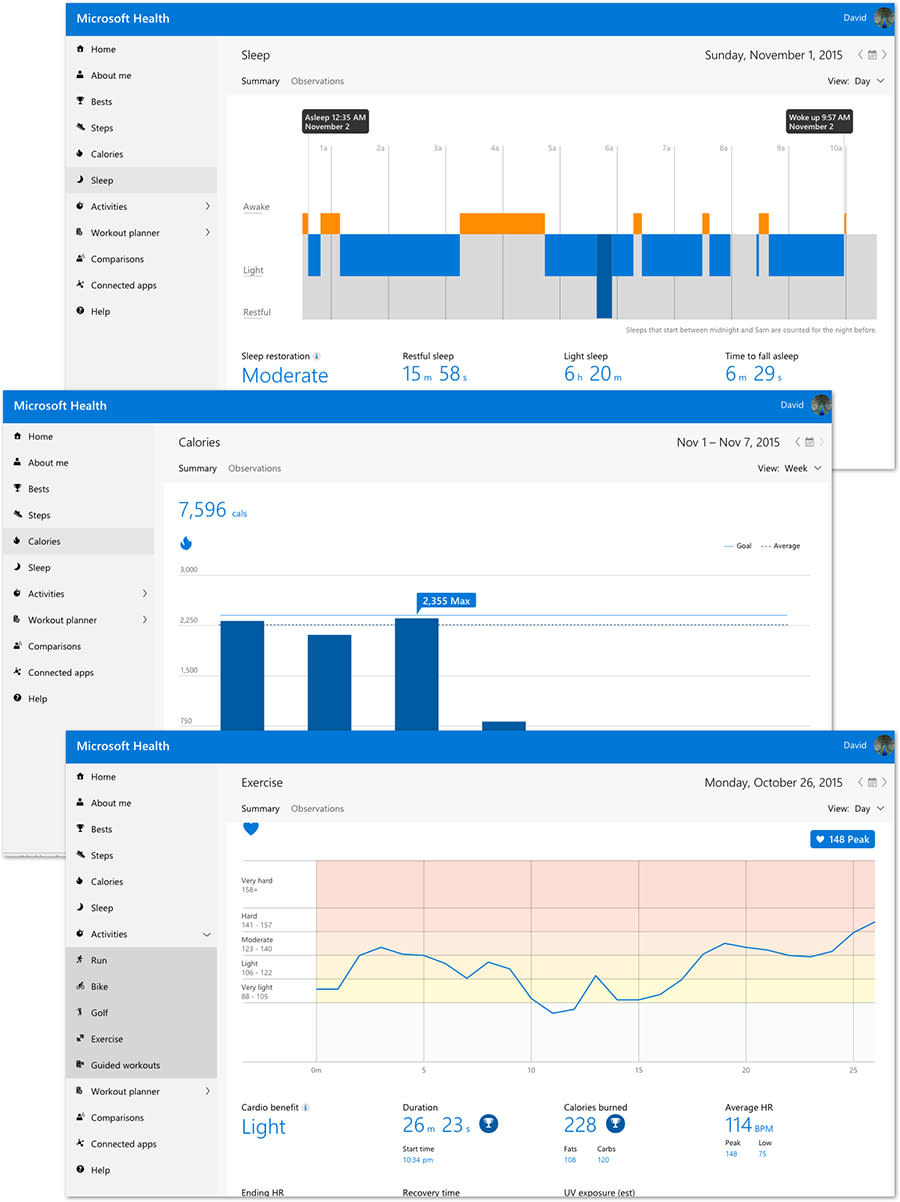
And by the way: Unlike most bands, this one can track VO2 max, a measurement of the maximum volume of oxygen an athlete can use. It is, Microsoft says, “the most precise measure of overall cardiovascular fitness.”
Once you’ve completed at least five strenuous runs or bike rides, you’ll start seeing your VO2 max data on the Web screen.
One frustration: You can’t see historical graphs in the phone app itself. Rival bands, like Fitbit and Up, let you see graphs of your sleep over the week or the month, which is handy. Microsoft makes you go to the Web site on your computer to see this kind of thing.
Sleep tracking
For best results, you’re supposed to tell the Band when you’re turning out the light at bedtime and when you’re awake again. It takes two button presses to do that, which isn’t a deal killer.
But rival bands can figure out on their own when you’ve fallen asleep.
Actually, the Microsoft Band can do autodetecting too, which is great if you forget to press the buttons. Unfortunately, the autodetecting algorithm is really flawed. It sometimes gives you really whacked-out estimates for when you went to sleep.
The Band can also act as a silent alarm, waking you by vibrating on your wrist. One beauty of having a touchscreen: You can set the alarm right on the watch, without having to fiddle with your phone.
In fact, at your option, the Band can try to wake you at the lightest phase of your sleep cycle, on the theory that you’ll avoid “sleep inertia” grogginess that way. You set the alarm for 7:30 a.m.; the Smart Alarm reserves the right to wake you up to 30 minutes earlier, if it can find a lighter-phase opportunity.
Band beefs
The Band has a few strikes against it. For one thing, it’s not waterproof. (Not many smartwatches are, but there are some — the LG G Watch R and the Sony SmartWatch 3, for example.) It’s fine with heavy sweat, washing your hands, and running in light rain, but showers and swimming pools are off-limits.
The battery lasts only two days, which is a royal pain. The charging cord snaps magnetically onto the Band’s clasp, which is cool. But charging every other day — yikes.
And weirdly, you can’t sync your data with other Band owners’ to show off and egg each other on, as you can with rivals like the Fitbit and Up bands. That’s one of the best parts of those products: health through humiliation.
Is it the best band of them all?
But never mind all that: The Band 2 is one of the most successful fitness wearables ever made. It strikes a unique halfway position on the spectrum between fitness band and smartwatch.
Earlier this year, I tested 22 fitness bands and declared the winner to be the $150 Fitbit Charge HR. It’s a comfortable, heart-tracking band that’s accurate and a joy to use. Its battery lasts five or six days, and its screen shows you incoming messages and calls. But it has no color, no touchscreen, and no other smartwatch features.
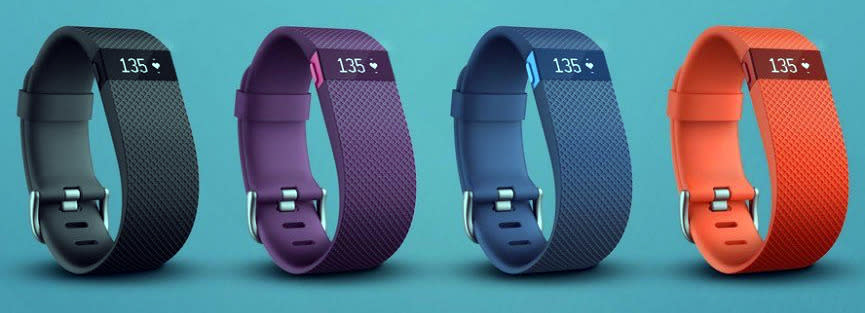
The Band 2 isn’t directly comparable; it’s much more of a smartwatch and has far more sensors. So I hereby declare it to be the best band in the world for people who are serious about their exercise: anyone who regularly runs, bikes, lifts weights, golfs, works out, and so on.
The Fitbit Charge HR is better for everyone else: people who aren’t hardcore about exercise but could benefit from gentle reminders and motivators to move more, sleep more, and eat better.
But either way, the Band 2 proves one thing conclusively: If you peek in the windows of the House of Microsoft, you’ll see a whole new family working inside.
Check out these other awesome stories from Yahoo Tech:
Space: Water, Water Everywhere — but Does That Mean There’s Life?
The 5 Biggest Myths About Smartphone Batteries (and Why They’re Mostly False)
David Pogue is the founder of Yahoo Tech. On the Web, he’s davidpogue.com. On Twitter, he’s @pogue. On email, he’s poguester@yahoo.com. He welcomes nontoxic comments in the Comments below.

